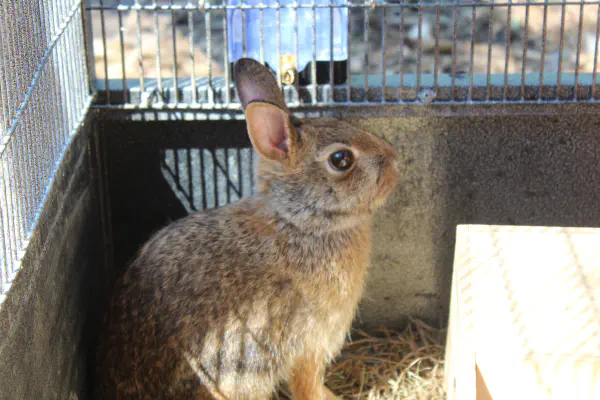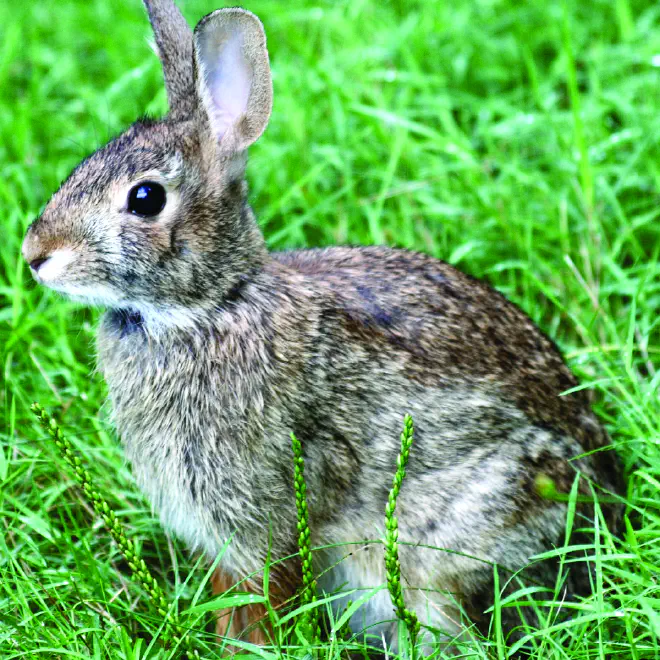Sylvilagus floridanus
Table of Contents

Scientific Classification
| Kingdom: Animalia |
| Phylum: Chordata |
| Class: Mammalia |
| Order: Lagomorpha |
| Family: Leporidae |
| Genus: Sylvilagus |
| Species: Sylvagus floridanus |
Conservation Status
Identifying Features
Speckled brown/gray fur, reddish fur around neck and light fur around the nose and underside, large erect ears, forward facing eyes, underside of fluffy tail is white.
Habitat & Range
Extreme southern Canada to South America, Easter U.S. and parts of New Mexico and Arizona. They prefer to live on the edge of the woods and open fields.
Behavior
Eastern Cottontails are extremely territorial and solitary animals. To spot predators they will stand on their hind legs to get a better view. If being pursued by a predator, they can run up to 15 miles an hour and will zig zag back and forth to try and not leave a scent trail.
Life Cycle
Mating is between February and September. When finding a mate the male will chase down the female and they will bat at each other with their front paws and then jump high into the air together. The female will gestate for 27 days. She will build a nest in a depression in the ground and give birth to 1-9 babies, called kits. The kits, or kittens, eyes have not opened, are hairless and cannot regulate their own body heat. They are weaned after 3 weeks and leave the mother at 7 weeks. Only 25% will live past 2 years and the average life span is only 15 months.


